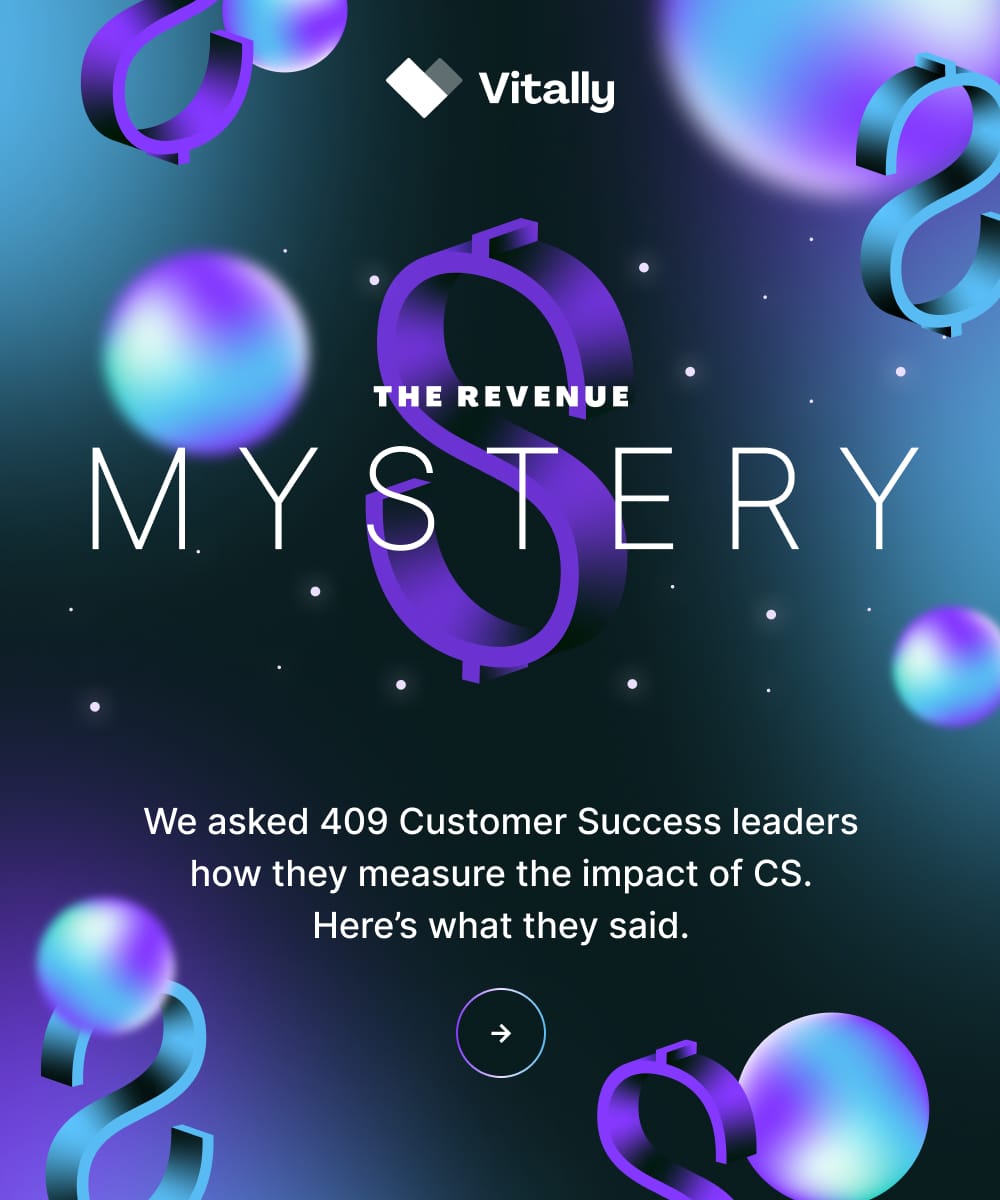
Donna Weber is a Customer Onboarding and Value Realization Expert, and a founding member of Vitally’s Success Network. Read more of Donna’s Customer Success insights at donnaweber.com.
///////
The phrase “land-and-expand” gets thrown around a lot in B2B sales. It’s the go-to tactic for companies looking to increase revenue from existing accounts.
But when I probe further I find many businesses pay attention to only the “land” part of things. They get focused on closing the sale and the initial onboarding but lack a strategy for delivering continuous value to drive account expansion. Instead, they hope customers love their products to the extent they start using more of them on their own.
But hope isn’t an expansion strategy. No matter how great your product is, you can't expect customers to spread the word within their company to drive wider adoption. You need a well-defined strategy that ensures users and companies take the actions that lead to the desired expansion. In this article, I’ll walk you through the exact process for creating an impactful land-and-expansion strategy.
What Is a Land-and-Expand Strategy?
By now, you should have an idea of what land-and-expand means. But I’ll provide a quick definition to ensure we are on the same page.
Land-and-expand means initially securing a small deal (land) with a customer and gradually expanding the business relationship (expand) by selling additional products or services over time.
When you start simple and deliver value very quickly, then it’s easier to guide customers to ongoing value, which often translates into account and revenue expansion.
How to Set Up a Formal Strategy For Your Land-and-Expand Motion
1. Explore Phased Deployments
Phased deployments are a key component of any effective land-and-expand strategy. Instead of lengthy onboarding processes where the customer waits six to 18 months to get any value for your product, a phased deployment means creating an iterative value journey that delivers quick wins to customers (ideally within 90 days), allows you to learn from their feedback, and sets new milestones throughout the customer lifecycle.
To illustrate, a big data platform company was taking nine to 12 months to go into production with their new customers’ data. We worked together to replace the monolithic deployment with a phased one. Now, customers go live in about six weeks with an initial data set or use case. After that, CSMs continue to work with the customers along a value journey to deploy the next data sets and use cases.
2. Define What Expansion Means For Your Business
Expansion isn’t one-size-fits-all. For some businesses, it could mean getting customers to explore new product use cases. For others, it might mean getting customers to use new features within the product. There can be several interpretations depending on what you’re selling and who your customers are.
Once you know what expansion means for your business, set the right goals and milestones during phased deployment.
Let's say expansion means increasing usage licenses. Your initial goal can be that they buy X number of licenses. Then, the next milestone would be to drive more purchases in a shorter time.
For example, instead of waiting six months for them to buy more licenses, aim for them to do so within three months. This strategy accelerates the growth and compounding revenue of each customer.
Learn more: How to identify account expansion opportunities
3. Understand What Leads to Expansion
Analyzing customer behavior helps determine what motivates accounts to expand their usage and how long it takes. This data is easy to find if you use a CSP.
Pay particular attention to a customer’s last action before expansion. For example, did they use a feature or certain module in the product before getting other teams on board? Based on these insights, you can create a value journey that delivers key milestones to drive expansion.
4. Assess the Customer’s Potential For Expansion
Try to understand the customer’s potential for expansion early. Your team should ask questions about this during the initial sale or onboarding at the latest. By the time you draft your initial success plan, you should have a good idea of how much the customer can grow.
Don't judge the account’s expansion potential by the size of the company. One customer might be the largest company in the world but only require your product for small use cases, while another might be small but have massive opportunities for expansion, especially as you partner in their company’s growth.
5. Scale Repeatable Processes
Think about how to scale user onboarding and education as the account expands and new people are added. If your CSMs have to handhold every new user and show them how the product works, they'll burn out quickly.
For example, you can build an academy where new users access onboarding and enablement content to ramp up quickly. Then, CSMs or account managers can provide high-touch support as needed.
Related: What is Scaled Customer Success?
6. Track Important Metrics
I recommend measuring the following metrics to know how well your strategy is working and what needs to be improved.
- Time to expand: How long it takes for the account to expand
- Time to first value: How long it takes for the customer to get value from your product
- Value cliff: How long it takes for the customer to not get additional value from your product after initial onboarding
- Expansion percentage: What percentage of new accounts expand after a specific period of time
With the first two metrics, you want to know what they are and then explore ways to reduce them. With the other two, you’re looking to achieve the opposite — that is, find out what they are and look for ways to increase them.
Related: 10 Customer Success KPIs that CS leaders track
7. Embrace Collaboration
Thinking of the land-and-expand strategy as solely a sales tactic is a big mistake. In reality, it's cross-functional. All customer-facing teams — from Sales and Marketing to Customer Success (CS)—need to work together to deliver value that drives expansion.
Let’s focus on your CS team. Since CSMs maintain the closest relationship with customers post-sale, they are in the best position to gather feedback and share how customers are getting value from the product, or not.
When CSMs discover and share new product use cases with the Marketing and Sales teams. These pieces of information can be used to create sales demos and scalable customer enablement libraries that educate customers on the product's value.
Learn more: What should the relationship between Customer Success and Product look like?
Wrapping Up: Focus on User Adoption
People often focus on the buyer, but unless users adopt the product, expansion won't happen. Make sure that each user persona is adopting your product, as this drives usage and expansion.
When users start seeing value, they share it with others, leading to viral, organic growth. It all comes down to creating a value journey for the users.
Enjoyed reading this? Check out other CS leadership resources in Vitally’s Success Network.










